Understanding an Ancient yet Evolving Paradigm
The mind-body connection is a foundational concept that illustrates how our mental and emotional states significantly influence physical health and healing. Rooted in ancient philosophies and increasingly validated by modern science, it underscores an integrated perspective where psychological and physiological processes are deeply intertwined. This article delves into the scientific basis, historical context, and clinical implications of this connection, while exploring holistic healing modalities that leverage this interaction to foster comprehensive well-being.
Scientific Foundations of the Mind-Body Connection
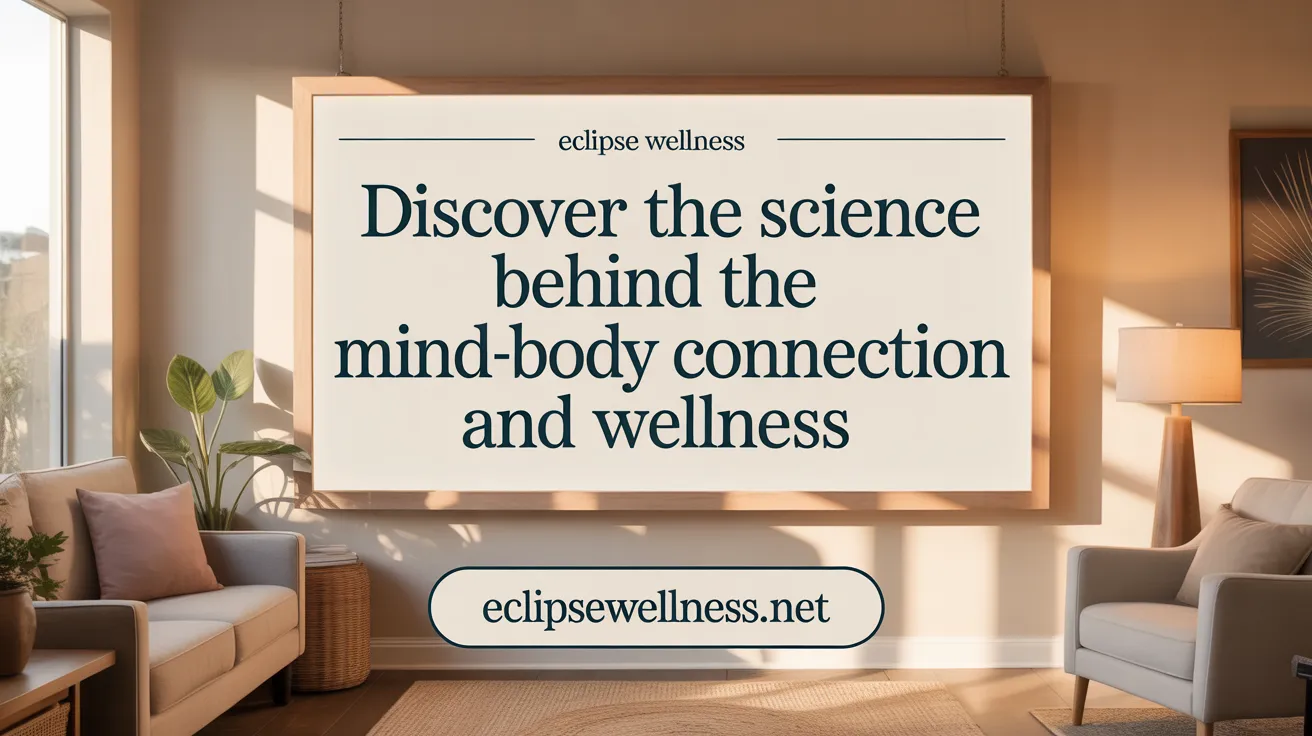
What is the scientific basis behind the mind-body connection?
The scientific understanding of the mind-body link is grounded in extensive neuroscience research and the field of psychoneuroimmunology. Brain imaging studies, such as functional magnetic resonance imaging (fMRI) and positron emission tomography (PET), reveal that specific neural networks connect mental processes with bodily functions.
One important discovery is the presence of the Somato-Cognitive Action Network (SCAN), a neural system that develops through childhood and becomes more complex in humans. This network encompasses areas responsible for movement, cognition, and autonomic functions like blood pressure and heart rate regulation, demonstrating how deeply interconnected the brain’s physical and mental components are.
Psychoneuroimmunology further elaborates this connection by showing that emotional states influence hormonal pathways and immune responses. For example, chronic stress and negative emotions activate hormonal pathways such as the hypothalamic-pituitary-adrenal (HPA) axis, releasing cortisol and other stress hormones that can suppress immune function and promote inflammation.
Research indicates that these interconnected systems can impact your health, increasing risks for cardiovascular conditions, autoimmune diseases, and even cancer. Conversely, positive mental practices like mindfulness and meditation can positively influence immune function and reduce inflammation.
In summary, the biological foundation of the mind-body connection involves complex neural networks and systemic interactions that link thoughts, feelings, and behaviors with physiological outcomes. This evidence supports a holistic understanding of health, emphasizing the importance of mental states in physical well-being.
Impact of Mental and Emotional Processes on Physical Health and Healing
How do mental and emotional processes impact physical health and healing?
Mental and emotional states have a profound impact on the body, influencing physical health and the healing process through multiple mechanisms. Emotions like stress and anxiety activate the brain's amygdala and other stress-related neural circuits, triggering hormonal responses such as the release of cortisol and adrenaline. These chemicals, while beneficial in acute situations, can impair immune function when released chronically, leading to increased susceptibility to infections, slower wound healing, and heightened inflammation.
Chronic negative emotions also contribute to health risks, including cardiovascular disease, autoimmune disorders, and metabolic issues. On the other hand, positive emotions—such as hope, gratitude, and joy—stimulate the body's reward systems, decrease stress hormones, and promote restful states that support immune activity and cellular repair. Evidence from neuroscience shows that mood states influence neural pathways that regulate immune responses, further linking emotional well-being to physical health.
Behavioral pathways also explain this connection. Emotions influence health-related behaviors like sleep quality, exercise habits, and nutrition, which are crucial for recovery and maintaining health. Social support and emotional regulation strategies, including mindfulness and therapy, help individuals better manage stress and foster resilience.
By addressing emotional health through practices like meditation, therapy, and social engagement, it is possible to reduce stress-related physiological effects and enhance healing. Healthcare providers increasingly recognize that treating emotional issues is not separate from physical health but an integral part of comprehensive care, ultimately improving recovery outcomes and long-term well-being.
| Aspect | Description | Impact on Healing |
|---|---|---|
| Stress hormones | Cortisol, adrenaline rise in response to emotional distress | Suppresses immune system, delays healing |
| Positive emotions | Joy, gratitude activate reward pathways | Reduce inflammation, promote immune response |
| Emotional regulation | Techniques like mindfulness, therapy calm the nervous system | Improve stress management, support recovery |
| Social support | Relationships and community provide emotional resilience | Enhance emotional regulation, boost immune function |
| Behavioral influence | Sleep, diet, exercise shaped by emotional states | Directly affect physical health and healing processes |
The complex interaction between mind and body underscores how emotional health plays a vital role in physical healing, emphasizing the importance of holistic care that addresses both mental and physical aspects.
Trauma, Emotional Well-Being, and Physical Health Outcomes
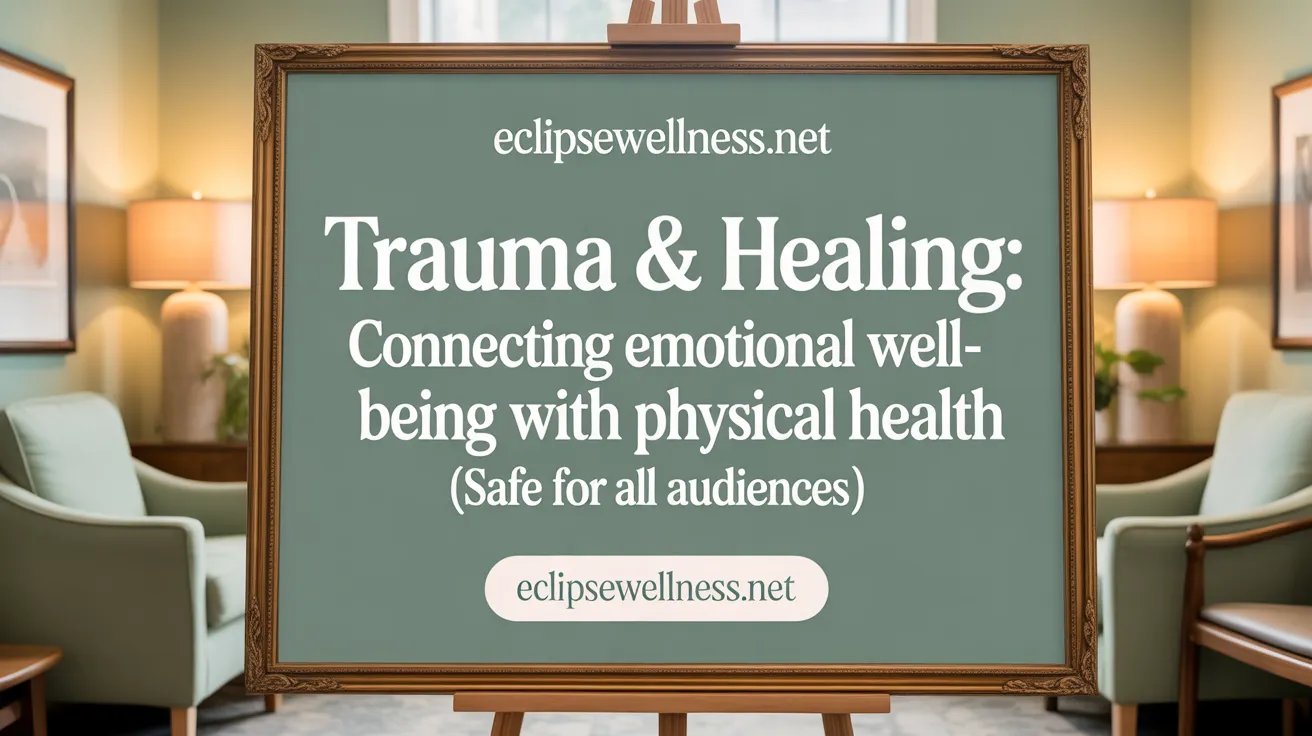
How does trauma influence bodily systems and overall health?
Trauma, especially when experienced during childhood, has profound effects on the body’s systems. Scientific research indicates that traumatic events can activate the stress response, leading to the persistent release of stress hormones like cortisol. Over time, this hyperactivation can contribute to inflammation, cellular aging, and disruptions in the endocrine and immune systems. Such biological changes are associated with chronic illnesses, including heart disease, autoimmune disorders, digestive problems, and metabolic issues.
What is the connection between Adverse Childhood Experiences (ACEs) and chronic illness?
A growing body of evidence links ACEs to long-term health problems. Individuals with multiple ACEs are more likely to develop chronic conditions such as diabetes, hypertension, and mental health disorders. These early traumatic experiences can cause lasting changes in neurodevelopment and stress regulation, which increase vulnerability to physical diseases later in life. The relationship underscores the importance of early intervention and trauma-informed care.
How do neurobiological mechanisms connect trauma and health?
Trauma impacts brain function, affecting areas responsible for emotion regulation, stress response, and decision-making. Activation of the hypothalamic-pituitary-adrenal (HPA) axis results in a cascade of hormonal responses that influence metabolic and immune functions. Neurotransmitter imbalances and neuroplastic changes can perpetuate a state of hyperarousal or emotional dysregulation, which contributes to physical symptoms and disease processes.
Can body-based therapies aid in trauma release?
Somatic therapies focus on perceiving and releasing stored energy and tension in the body, offering a pathway to trauma healing. Techniques like somatic experiencing, EMDR, Hakomi, and Internal Family Systems help individuals become aware of bodily sensations linked to traumatic memories. These therapies work by rewiring physiological responses, reducing hyperarousal, and promoting emotional regulation.
What role do body-based therapies and nature play in trauma recovery?
Complementary approaches such as yoga, movement therapy, outdoor activities, and eco-therapy support trauma recovery by calming the nervous system and fostering a sense of safety. These therapies enhance vagal tone, regulate the fight-or-flight response, and promote neurobiological healing. Exposure to natural environments further reduces cortisol levels and increases feelings of well-being, making them valuable adjuncts to trauma-focused psychological care.
| Aspect | Explanation | Additional Details |
|---|---|---|
| Influence on bodily systems | Trauma activates stress pathways affecting immunity, inflammation, and hormones | Links to chronic illnesses like heart disease |
| Childhood trauma and health | ACEs contribute to long-term health risks | Increased risk for metabolic and autoimmune issues |
| Neurobiological mechanisms | Brain and hormonal changes sustain trauma effects | Effects observable in neuroimaging studies |
| Somatic therapy benefits | Release stored tension, rewire physiological responses | Promotes emotional resilience and recovery |
| Role of natural environments | Reduce stress, support nervous system regulation | Eco- and nature-based therapies enhance healing |
Understanding the complex connection between trauma, emotional health, and physical well-being highlights the importance of holistic, body-focused healing practices. These approaches not only address psychological trauma but also contribute to restoring physical health, demonstrating the profound integration of mind and body.
Holistic and Therapeutic Modalities Leveraging the Mind-Body Relationship
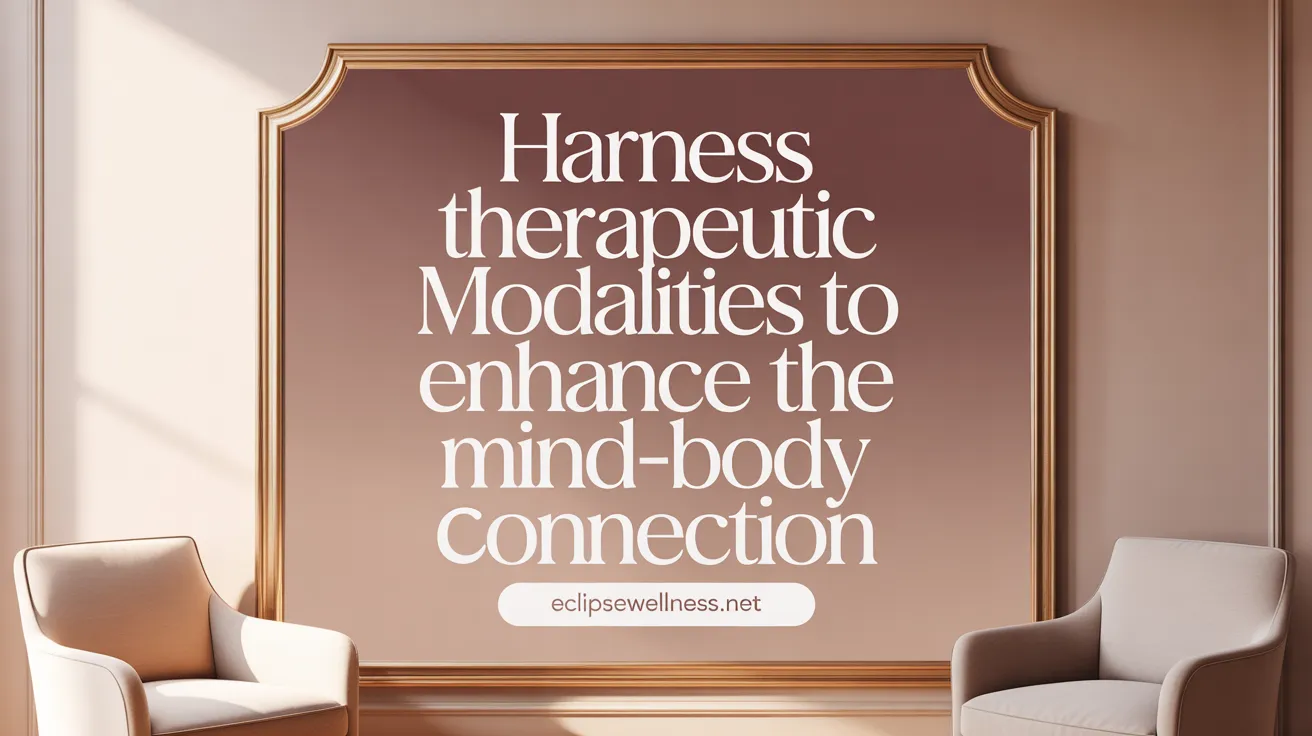
What holistic and therapeutic modalities utilize the mind-body relationship for healing?
A variety of holistic and therapeutic practices harness the connection between the mind and body to promote healing and well-being. Popular modalities include yoga, tai chi, and Qigong. These movement-based practices incorporate breath control, attention, and gentle movements designed to enhance physical health and mental clarity.
Mindfulness and meditation are also central to many mind-body therapies. Techniques such as guided imagery, deep breathing exercises, and progressive muscle relaxation help reduce stress, improve emotional regulation, and alleviate physical symptoms like pain and fatigue.
Complementary therapies such as acupuncture and aromatherapy tap into the body's energy flow and sensory responses to foster relaxation and healing. Acupuncture, rooted in traditional Chinese medicine, involves stimulating specific points on the body to balance energy (Qi), potentially easing pain and improving immune function.
Biofeedback is a technique that uses electronic monitoring to help individuals gain awareness and control over physiological functions such as heart rate, muscle tension, and temperature. This method is effective in managing stress, migraines, and anxiety.
Clinical settings increasingly incorporate these mind-body approaches as part of integrative medicine, complemented by clinical therapies like cognitive-behavioral therapy, to holistically address physical and emotional health.
Research shows that these practices influence neural pathways, immune responses, and hormonal systems. Neuroimaging studies reveal changes in brain activity after mindfulness training, supporting their efficacy.
While ongoing research is refining understanding, the growing evidence base and safety profile encourage broader adoption of these modalities for conditions such as chronic pain, depression, and post-traumatic stress disorder.
Below is an overview of some prevalent approaches:
| Modality | Description | Evidence of Effectiveness | Additional Notes |
|---|---|---|---|
| Yoga | Combines physical postures, breath control, and meditation | Effective for stress, pain, and mental health | Widely practiced for holistic health |
| Tai Chi/Qigong | Slow movements with breathing exercises | Improves balance, reduces anxiety | Emphasizes energy flow and mindfulness |
| Biofeedback | Electronic monitoring of physiological functions | Manages stress-related conditions | Useful for migraines, anxiety, and hypertension |
| Meditation & Mindfulness | Focused attention and awareness practices | Decreases depression and anxiety | Enhances emotional regulation |
| Acupuncture | Stimulating specific body points to balance energy flow | Used for pain management, immune support | Recognized in integrative medicine |
| Aromatherapy | Use of essential oils to promote well-being | Supports relaxation and mood improvement | Often combined with other therapies |
By integrating these methods into healthcare, practitioners aim to strengthen the natural connection between mind and body, fostering overall resilience and healing.
Research continues to explore their biological impacts, with neuroimaging and physiological studies confirming changes in brain activity and immune responses. As evidence grows and techniques become more refined, these approaches are poised to become central components of holistic health strategies.
Reiki, Somatic Therapy, and Healing Through Energy and Body Awareness
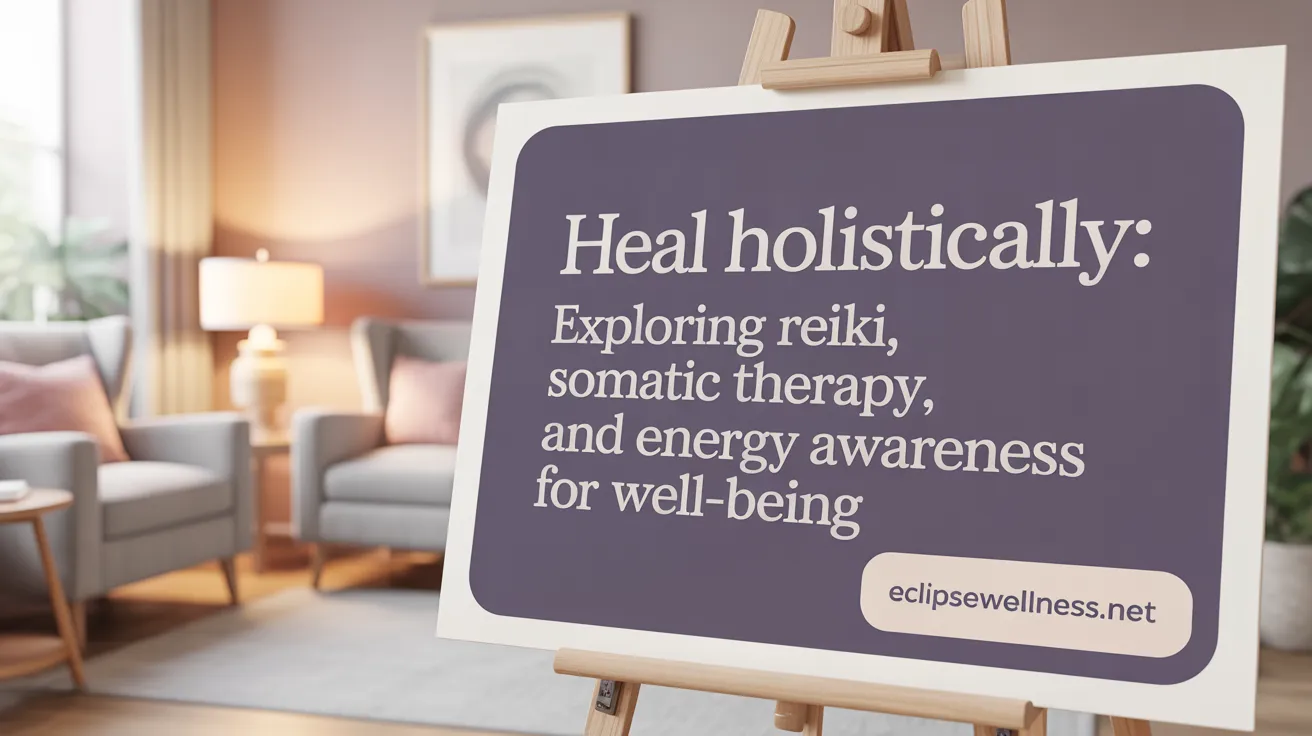
How do practices like Reiki and somatic therapy facilitate healing?
Reiki and somatic therapy are two distinct approaches that promote healing by engaging different aspects of the mind-body connection.
Reiki is a holistic Japanese technique that channels universal life force energy, known as Rei (higher knowledge) and Ki (life energy). During a Reiki session, practitioners use various methods such as hands-on touch, light touch, or hands hovering above the body to facilitate the flow of energy. The belief is that disruptions in this energy flow can lead to illness, and Reiki aims to restore balance, fostering relaxation and supporting the body’s natural healing ability.
In contrast, somatic therapy emphasizes awareness of bodily sensations, movement, and muscle tension to release physical and emotional trauma stored in the body. Techniques within somatic therapy, such as somatic experiencing or Hakomi, help individuals notice physical sensations linked to stress or traumatic memories, allowing them to process and resolve these experiences. This approach leverages neuroplasticity—the brain's ability to change and reorganize—to help rewire neural pathways and promote emotional resilience.
Both practices recognize that health is rooted in the interconnectedness of mind, body, and spirit. Reiki’s energetic approach works in tandem with somatic therapy’s focus on bodily awareness, offering a comprehensive pathway for healing.
Mechanisms of healing in both practices
Reiki facilitates healing by transmitting universal energy that helps unblock stagnant energy, promote relaxation, and activate the body's self-healing processes. The calming state induced by Reiki can reduce stress and lower cortisol levels, which may help improve immune function.
Somatic therapy, on the other hand, works by engaging the nervous system directly. By tuning into bodily sensations, individuals can identify areas of tension and emotional holding patterns. Releasing stored tension helps restore physiological balance, reduce hyperarousal, and enable emotional integration.
Both approaches also promote activating the relaxation response—a state counteracting stress-related physiological reactions. This reduction in stress promotes better immune function, improved mood, and overall health.
Scientific perspectives on energy and neuroplasticity
Although Reiki’s energetic principles are sometimes viewed skeptically by conventional science, growing research suggests that energy-based therapies can influence the body positively. For example, some studies indicate that Reiki may promote relaxation and reduce anxiety, which aligns with physiological changes such as decreased heart rate and blood pressure.
Neuroplasticity underpins somatic therapy's effectiveness. Evidence shows that focusing on bodily sensations and movement can lead to neural and physiological changes, rewiring the brain to respond differently to stressors and trauma.
Functional neuroimaging research, like fMRI scans, demonstrates that body-based therapies impact brain regions involved in emotional regulation, stress response, and pain management.
Complementary nature of Reiki and somatic approaches
Reiki and somatic therapy complement each other well in holistic healing strategies. While Reiki addresses energetic blockages and promotes a deep state of relaxation, somatic therapy targets physical tension and unprocessed emotional trauma.
When combined, they can provide a multi-layered approach to healing—balancing energetic flow and the nervous system’s health.
This synergy enhances emotional resilience, decreases stress, and supports physical recovery, emphasizing the holistic view that mind, body, and spirit are intimately connected.
| Aspect | Reiki | Somatic Therapy | Scientific Foundation |
|---|---|---|---|
| Method | Energy channeling through hands | Body awareness, movement, and tension release | Neuroplasticity, neuroimaging, physiological changes |
| Focus | Balancing energy flow | Releasing trauma and tension | Stress reduction, immune support |
| Key Benefit | Deep relaxation, energy clearing | Emotional integration, resilience | Stress reduction, improved mental health |
| Evidence Level | Growing research, some anecdotal | Supported by neuroplasticity studies | Functional MRI demonstrates neural shifts |
This integrative understanding highlights how both energy-based and body-centered therapies harness the body's innate healing capacities, providing powerful tools for holistic health.
Recognizing and Restoring Mind-Body Harmony for Whole-Person Healing
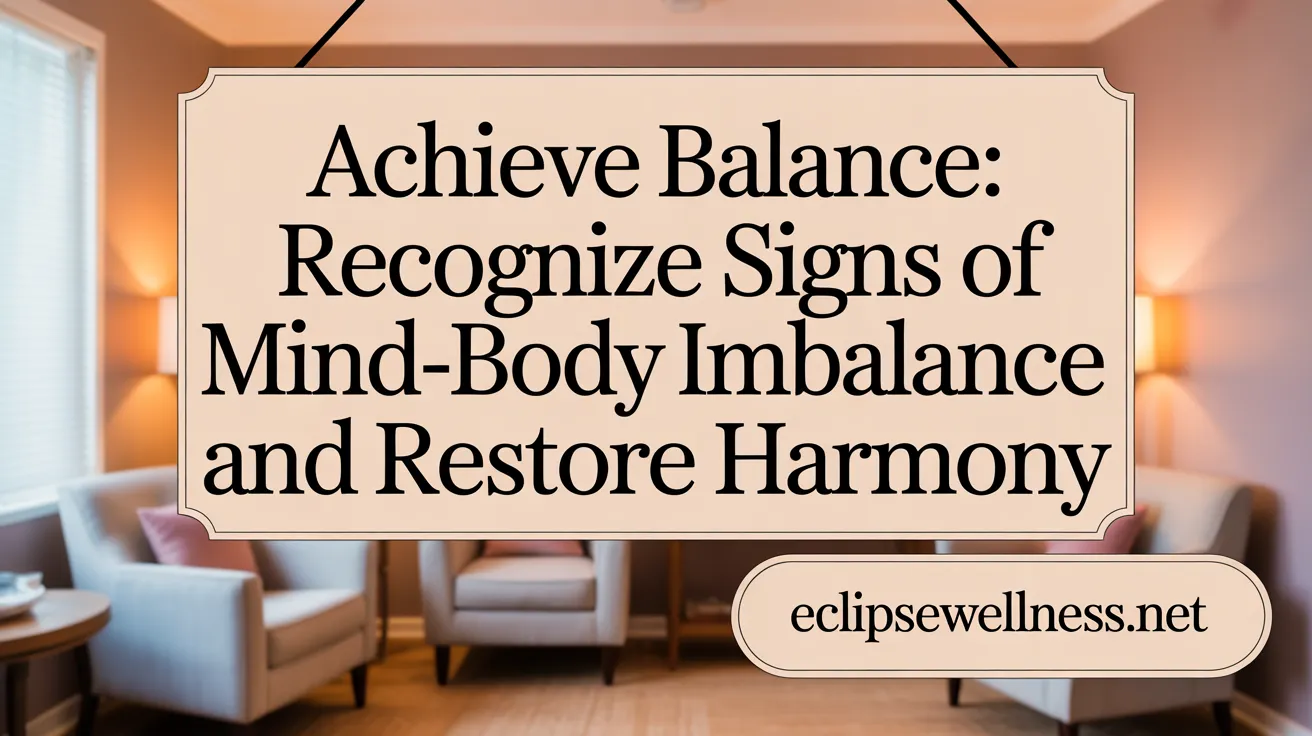 Signs of imbalance in the mind-body connection can manifest in various ways, including persistent stress, emotional disturbances like anxiety or depression, physical fatigue, sleep issues, and unexplained physical symptoms such as headaches, gastrointestinal problems, or muscular tension. Physical signs may also include dizziness, unsteadiness, or blurred vision, often indicating issues with neurological or inner ear health. Emotional and mental signs, such as mood swings and irritability, highlight disruptions in energy flow and emotional regulation.
Signs of imbalance in the mind-body connection can manifest in various ways, including persistent stress, emotional disturbances like anxiety or depression, physical fatigue, sleep issues, and unexplained physical symptoms such as headaches, gastrointestinal problems, or muscular tension. Physical signs may also include dizziness, unsteadiness, or blurred vision, often indicating issues with neurological or inner ear health. Emotional and mental signs, such as mood swings and irritability, highlight disruptions in energy flow and emotional regulation.
Restoring harmony requires a holistic approach. Engaging in mindfulness practices, breathing exercises, and physical movement helps realign mental and physical states. Nourishing diets, emotional release techniques like therapy, ensuring sufficient sleep, and nurturing positive relationships support overall balance. Addressing underlying health issues through proper medical care complements mental and emotional self-care efforts, promoting a healthy flow of energy and information between mind and body.
Holistic strategies include approaches such as meditation, yoga, tai chi, acupuncture, and nutritional optimization, all aimed at fostering resilience and emotional equilibrium. Techniques like grounding exercises and body-based therapies can help release stored trauma or emotional tension that may contribute to physical symptoms. Recognizing the importance of physical health conditions and addressing them alongside psychological well-being creates a comprehensive pathway toward achieving and maintaining overall harmony.
Ultimately, understanding and detecting early signs of imbalance, coupled with integrative practices, fosters a balanced and resilient mind-body state. This enables individuals to not only recover from disruptions but also sustain a healthier, more vibrant life where mental and physical health support each other in harmony.
Embracing the Integrated Path to Wellness
The mind-body connection represents a scientifically grounded and historically rich framework that emphasizes the inseparability of mental, emotional, and physical health. Recognizing how thoughts, feelings, and trauma influence bodily functions enables more effective healing approaches that integrate mind and body. Holistic and therapeutic modalities—from meditation and yoga to somatic therapy and Reiki—offer pathways to restore balance, enhance resilience, and improve health outcomes. As research advances and healthcare moves toward whole-person care, embracing mind-body principles can empower individuals and practitioners alike to foster comprehensive wellness that honors the complexity and unity of the human experience.
References
- Understanding the Mind-Body Connection
- The Inner Healer: Mind-body Strategies for Health - PMC
- The Healing Energy of Reiki and the Mind-body Connection
- Recovery from Trauma and the Mind-Body Connection
- The Mind–Body Connection: Understanding Their Link
- The Mind-Body Connection: Unlocking Mental Health ...
- 5 ways to ease pain using the mind-body connection
- What Science Says About the Mind-Body Connection for ...
